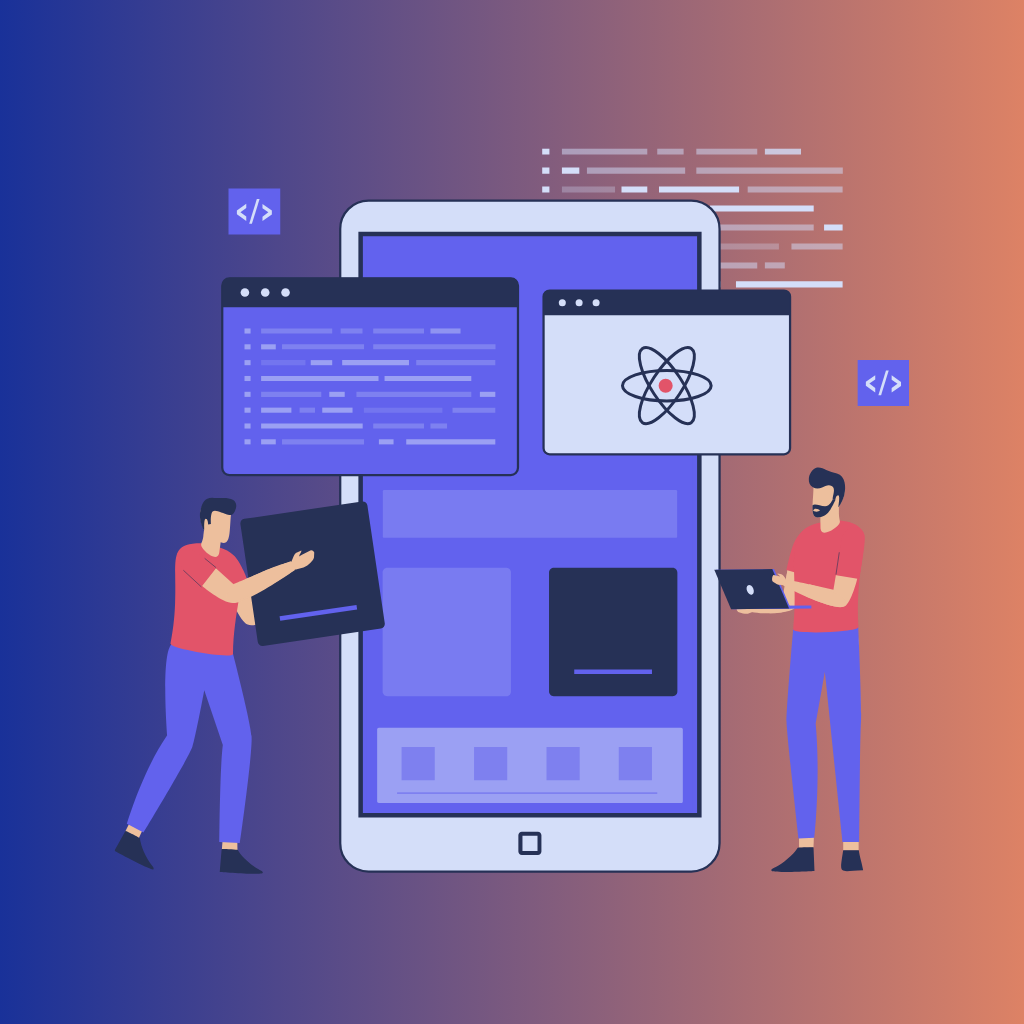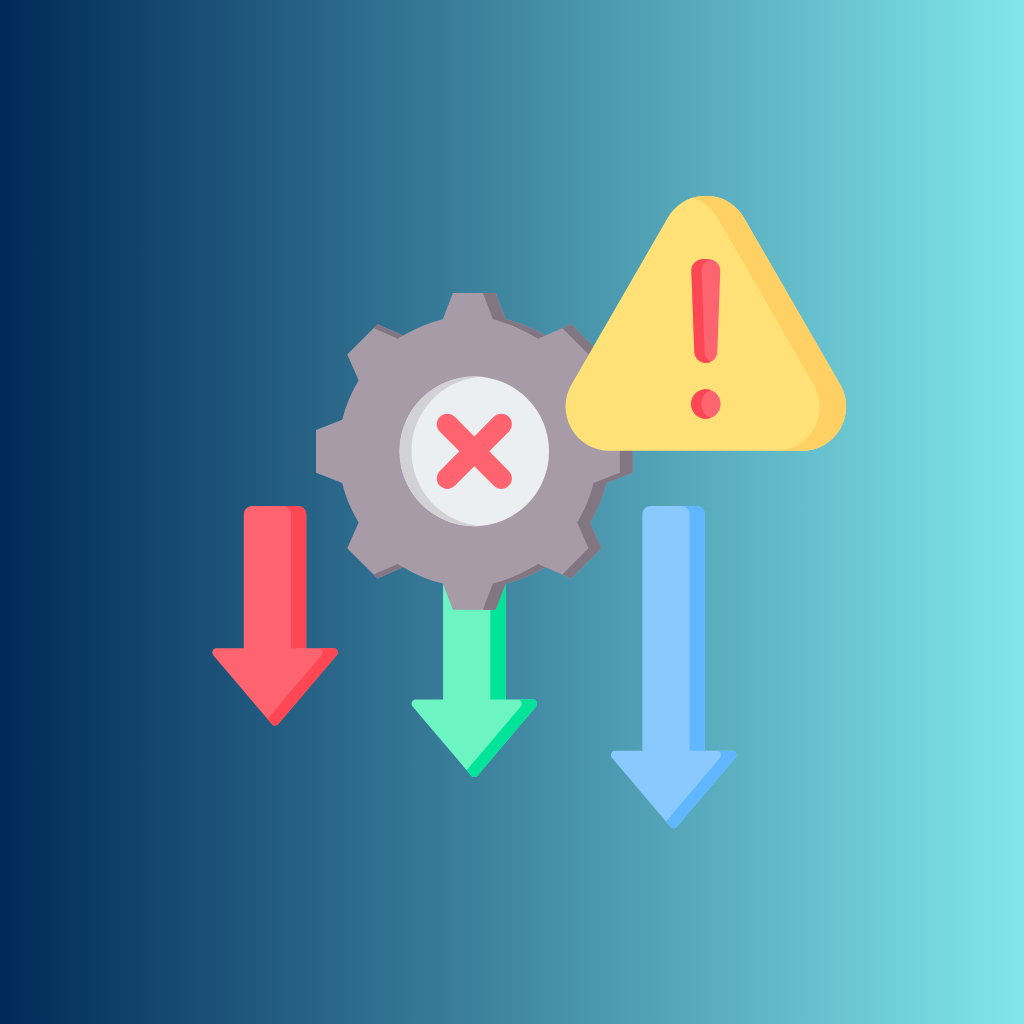Web Apps vs. Native Apps: Navigating the Digital Landscape for Businesses
In the ever-evolving digital landscape, the significance of mobile and web applications has skyrocketed, becoming central to personal and professional lives worldwide. As businesses strive to establish a robust online presence and foster user engagement, the decision between developing a web app or a native app has emerged as a pivotal strategic dilemma. This choice is not just a technical consideration; it's a business decision that can significantly influence an organization's ability to connect with its audience, streamline operations, and drive growth.
Web apps and native apps each come with their own set of benefits and constraints, tailored to different business needs and user expectations. While web apps offer the convenience of cross-platform accessibility and easier maintenance, native apps stand out with their superior performance and enhanced user experience. The decision between these two pathways hinges on a myriad of factors, including target audience behavior, app functionality requirements, budget constraints, and long-term business goals.
This blog aims to demystify the complexities surrounding web and native apps, offering readers a clear, comprehensive guide to making informed decisions in this critical area of digital strategy. Whether you're a business owner, a developer, or simply an enthusiast keen to understand the nuances of app development, this post will provide you with the insights and tools needed to navigate this decision with confidence. By delving into the definitions, advantages, disadvantages, and business implications of web and native apps, we aim to equip you with the knowledge to choose the right path for your app development journey, aligning your digital strategy with your overarching business objectives.
I. Understanding Web Apps and Native Apps
In the quest to select the optimal approach for app development, a solid understanding of what web apps and native apps entail is crucial. Let's break down these two contenders, exploring their workings, characteristics, and some examples to paint a clearer picture.
A. Definition and Basic Understanding of Web Apps
Web apps are essentially applications that are accessed via a web browser over a network or the internet. They are not standalone applications that you download from an app store; instead, they run on web servers and are delivered to users over the internet.
- How Web Apps Work: When a user accesses a web app, their browser connects to a server, requesting the necessary data to display the app. The server responds, and the browser renders the app using standard web technologies such as HTML, CSS, and JavaScript. This process allows web apps to be platform-independent, running on any device with a web browser.
- Key Characteristics: Web apps are highly accessible and can be used on various devices without the need for a specific operating system. They're easier to maintain and update since changes are made on the server and immediately reflect on the user's side without requiring them to update the app manually.
- Examples: Google Docs and Trello are excellent examples of web apps. Users can access these tools through their web browsers on any device, experiencing functionality that's close to what a native app offers but without the need for downloads or installation.
B. Definition and Basic Understanding of Native Apps
Native apps are specifically developed for a particular platform or operating system, utilizing the software and hardware capabilities of the device to deliver an optimized user experience.
- How Native Apps Work: These apps are installed directly on a device and can operate offline. They are developed using platform-specific programming languages and tools, allowing them to leverage the device's hardware and software, resulting in faster performance and smoother user interactions.
- Key Characteristics: Native apps provide superior performance and a more intuitive, user-friendly experience. They can directly access a device's hardware, like cameras, microphones, and GPS, offering functionalities that web apps can't match.
- Examples: Apps like WhatsApp and Instagram are native to devices, offering fast, responsive experiences that feel at home on the user's device, whether it's Android or iOS.
C. Side-by-Side Comparison of Web Apps and Native Apps
Understanding these distinctions is vital for businesses and developers as they navigate the app development landscape, ensuring that the choice between a web app and a native app aligns with their specific goals and user needs.
II. Advantages and Disadvantages
When choosing between web apps and native apps, it's essential to weigh their advantages and disadvantages. This comparison can provide valuable insights for businesses and developers, helping them align their app development strategy with their objectives and user expectations.
A. Advantages of Web Apps
- Accessibility and Compatibility: Web apps run on web browsers, making them easily accessible from any device or platform with an internet connection. This universality ensures that users can access the app's functionality without worrying about their device type or operating system.
- Cost-Effectiveness: Developing a web app can be more budget-friendly than creating a native app, especially since a single version can cater to multiple platforms. This eliminates the need to develop and maintain separate versions for iOS, Android, and other operating systems.
- Ease of Maintenance and Updates: Web apps centralize their data and functionality on a server, meaning that updates and bug fixes are applied directly to the server. Users always access the latest version without needing to update the app manually.
- Less Friction for User Adoption: Users can start using web apps immediately without the extra step of downloading them from an app store. This ease of access can enhance user adoption rates.
- SEO Advantages: Web apps can be optimized for search engines, making them more discoverable to potential users. SEO strategies can drive traffic to the app, increasing its visibility and user base.
B. Disadvantages of Web Apps
- Performance Limitations: Web apps generally cannot match the speed and responsiveness of native apps. Their performance is contingent on the web browser and internet connection quality.
- Limited Access to Device Features: While web apps can utilize some device features, their access is restricted compared to native apps. This limitation can affect the app's functionality and user experience.
- Internet Dependency: Most web apps require an internet connection to function, limiting their use in areas with poor or no connectivity.
C. Advantages of Native Apps
- Superior Performance: Native apps are specifically designed for their platform, allowing them to leverage the device's hardware and software for optimal performance. This results in faster response times and smoother interactions.
- Enhanced User Experience: By adhering to a platform's design guidelines, native apps offer a more intuitive and integrated user experience. Users benefit from familiar interfaces and gestures, enhancing usability.
- Full Access to Device Features: Native apps can utilize all device capabilities, such as GPS, camera, accelerometer, and more, enabling richer functionality and a more immersive user experience.
D. Disadvantages of Native Apps
- Higher Development Costs: Developing native apps for multiple platforms can be expensive since it requires creating separate versions for each operating system, increasing development time and costs.
- Platform-Specific Development: Developers need to have expertise in the specific programming languages and development tools for each platform, which can limit resource flexibility and increase development complexity.
- More Complex Maintenance and Updates: Native apps require users to download updates, which can lead to version discrepancies and complicate maintenance. Developers must also manage updates across different platforms.
- User Friction for Initial Use: Users need to download native apps from an app store, which can create a barrier to initial engagement, especially if users are concerned about storage space or data usage.
Understanding these advantages and disadvantages is crucial for businesses and developers to make informed decisions that align with their goals, target audience, and available resources. The choice between a web app and a native app should be guided by a strategic evaluation of these factors to ensure the app's success and effectiveness in meeting user needs.
III. Business Considerations
When deciding between a web app and a native app, businesses must evaluate various factors beyond just technical capabilities. The decision should align with the company's broader business objectives, target audience preferences, and resource availability. Here, we explore key business considerations that should guide this critical decision-making process.
A. Understanding the Target Audience and Their Preferences
The target audience's preferences and behaviors play a pivotal role in determining the type of app that will best meet their needs. Consider the following:
- Device Usage: Understand which devices your target audience primarily uses. If they predominantly use smartphones, a native app might offer a more engaging experience. If they're more inclined towards desktops or multiple devices, a web app could be more accessible.
- Connectivity: Consider the typical environment of your audience. If they often face connectivity issues, a native app with offline capabilities might be more suitable.
- User Expectations: Gauge the level of performance and interactivity your audience expects. Users might favor native apps for more complex or performance-intensive applications.
B. Analyzing the Business Objectives and How the App Aligns with These Goals
The app should serve as a tool to advance your business objectives. Whether it's enhancing customer engagement, increasing sales, or improving operational efficiency, the choice between a web app and a native app should be influenced by how well the app can support these goals.
- Customer Engagement: Determine how your app will foster engagement. If real-time updates and push notifications are crucial, a native app might be more effective.
- Sales and Conversion: Consider the app's role in your sales funnel. If the goal is to facilitate purchases or conversions, the app's performance and user experience could be deciding factors.
- Operational Efficiency: If the app is intended for internal use, think about how its accessibility and compatibility can impact productivity and operational workflows.
C. Considering the Budget and Resources Available for App Development and Maintenance
Budget constraints and resource availability are critical in choosing the right development path:
- Development and Maintenance Costs: Evaluate your budget for initial development and ongoing maintenance. Web apps might offer cost savings, especially if targeting multiple platforms.
- Resource Expertise: Consider the expertise of your development team. If your team is more proficient in web technologies, developing a web app might be more feasible.
D. Evaluating the Importance of App Performance and User Experience in the Context of the Business
Performance and user experience can significantly impact user satisfaction and business outcomes:
- User Retention: A seamless and responsive app can enhance user retention. Native apps typically offer better performance and a more polished user experience.
- Brand Reputation: The app's performance and design reflect on your brand. A well-designed app, whether web or native, can enhance your brand's image and credibility.
By carefully considering these business factors, companies can make more informed decisions about whether a web app or native app is more suitable for their specific circumstances. Aligning the app's development with strategic business objectives and user needs ensures that the app not only meets technical expectations but also contributes to the business's overall success.
IV. How to Make the Right Choice
Deciding between a web app and a native app can be a challenging dilemma for businesses and developers. To navigate this decision, it's crucial to consider a set of key factors and follow a decision-making framework that aligns with your business goals, user needs, and technological landscape. Here's a guide to help you make an informed choice.
A. Key Factors to Consider When Choosing Between a Web App and a Native App
- User Experience: Evaluate how important a seamless, responsive user experience is for your app. If you require complex interactions or high performance, a native app might be the better choice. For broader accessibility and easier updates, consider a web app.
- Development Budget and Timeline: Assess your budget constraints and timeline. Web apps generally cost less and can be developed more quickly, while native apps require a more significant investment in time and resources.
- App Functionality and Features: Determine the functionalities your app needs to offer. If you need to access device-specific features or provide offline access, a native app is likely necessary. For less complex functionalities, a web app might suffice.
- Maintenance and Updates: Consider the ease of updating your app. Web apps can be updated centrally without user intervention, while native apps require users to download updates, which might lead to fragmentation.
- Target Audience: Understand your audience's preferences and behaviors. If they predominantly use mobile devices and value speed and performance, a native app might be more appropriate. If accessibility across devices is a priority, a web app could be more effective.
B. Decision-Making Framework or Checklist to Guide Businesses and Developers
- Define Objectives: Clearly outline what you want your app to achieve, aligning with your business goals and user needs.
- Analyze Your Audience: Gather insights about your target users, their device preferences, and usage patterns.
- Evaluate Technical Requirements: List the technical features your app requires, including performance needs, device feature access, and connectivity considerations.
- Assess Resources: Consider your available budget, expertise, and time frame for development and maintenance.
- Long-Term Vision: Think about how your app fits into your long-term business strategy and how it might need to evolve.
C. Recommendations for Different Scenarios and Business Types
- Startups: If budget and time are constraints, a web app might be a pragmatic initial choice, allowing you to test your concept and gather user feedback quickly.
- Established Businesses: For businesses with a clear understanding of their customer base and more resources, a native app can offer a tailored, high-performance experience that aligns with brand expectations.
- E-commerce Platforms: Native apps can provide a more engaging shopping experience, leveraging device features for a personalized approach. However, if reaching a wider audience is the priority, a web app could be more suitable.
- Content Providers: Web apps can offer broader accessibility for content consumption, but if the content requires high interactivity or offline access, a native app might be necessary.
By systematically evaluating these factors and following the outlined framework, businesses and developers can make a well-informed decision on whether a web app or a native app best suits their needs, ensuring that the chosen solution effectively supports their objectives and caters to their users' expectations.
V. Future Trends and Considerations
As we look toward the horizon of app development, it's clear that the landscape is continually evolving. New technologies, user behaviors, and market dynamics are shaping the future of how apps are designed, developed, and deployed. When choosing between web apps and native apps, it's essential to consider not just the current state of technology but also the direction in which we're heading. Here's an exploration of future trends and considerations that could influence your decision-making process.
A. Emerging Technologies and Trends in Web and Native App Development
- Progressive Web Apps (PWAs): PWAs are an emerging trend that blurs the lines between web and native apps. They offer a native app-like experience, including offline capabilities and push notifications, without the need to download an app from a store. As browser technologies and mobile hardware continue to evolve, PWAs could become a compelling alternative, combining the best of both worlds.
- Cross-Platform Development Tools: Tools like React Native and Flutter are gaining traction for enabling developers to create apps that run on both iOS and Android from a single codebase. These advancements could reduce the time and cost associated with native app development, making it a more accessible option for businesses.
- Augmented Reality (AR) and Virtual Reality (VR): As AR and VR technologies mature, they will offer new opportunities for engaging app experiences. While currently more feasible in native apps due to hardware integration, web technologies are also evolving to accommodate these experiences.
B. How Future Tech Advancements Might Influence the Decision-Making Process
- Device Convergence: As the lines between device categories blur, with smartphones, tablets, and laptops offering increasingly similar functionalities, the distinction between web and native apps may become less significant. Developers will need to consider how their apps can provide consistent experiences across a range of devices.
- Internet Accessibility and Speed: Improvements in global internet infrastructure, like the expansion of 5G networks, could diminish the relevance of offline access, a key advantage of native apps. Enhanced connectivity might tilt the balance in favor of web apps, especially in regions where internet access is becoming more reliable and faster.
- User Expectations: As users become more accustomed to sophisticated app experiences, their expectations will rise. Apps that leverage the latest technologies to deliver intuitive, immersive, and personalized experiences will set the standard, influencing whether a web or native approach is more suitable.
Conclusion
Choosing between a web app and a native app is a decision that carries significant implications for businesses in today's digital-first environment. As we've navigated through the intricacies of web and native apps, we've explored their respective advantages, disadvantages, and the pivotal business considerations that should influence this decision. The landscape of app development is nuanced, with each path offering unique benefits tailored to different business models, target audiences, and strategic objectives.
We've underscored the importance of aligning your app development choice with your overarching business goals, user needs, and available resources. Whether you opt for the broad accessibility and ease of maintenance of a web app or the high performance and enhanced user experience of a native app, the decision should be informed by a thorough analysis of your specific circumstances and aspirations.
As technology continues to evolve and user expectations rise, staying attuned to the latest trends and advancements will be crucial in adapting your strategy and ensuring that your app remains relevant and competitive. The choice between a web app and a native app is not just a technical decision; it's a strategic one that can influence your business's trajectory and your users' satisfaction.
We encourage businesses and developers to carefully consider all factors discussed, using the provided framework to guide their decision-making process. Remember, the right choice is the one that best aligns with your unique goals, audience, and resources. For personalized advice and insights tailored to your specific context, engaging with professional app developers or consultants can provide valuable direction and ensure that your app venture is successful and impactful.
As you embark on your app development journey, remember that the choice between a web app and a native app is a foundational decision that sets the stage for your app's role in driving your business forward. Make this choice with a clear understanding of your objectives and a forward-looking perspective, ensuring that your app not only meets current needs but is also poised to adapt and thrive in the future of digital interaction.
















